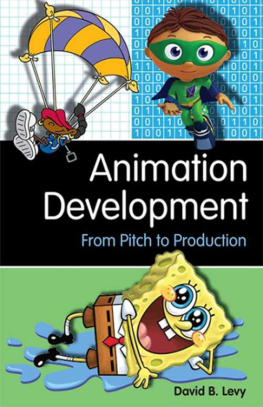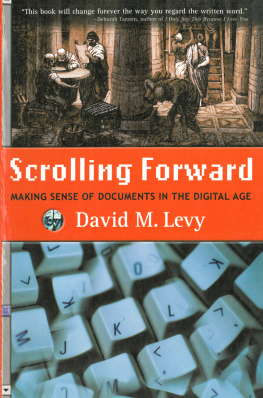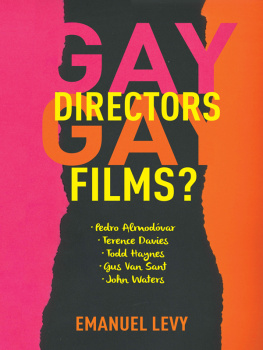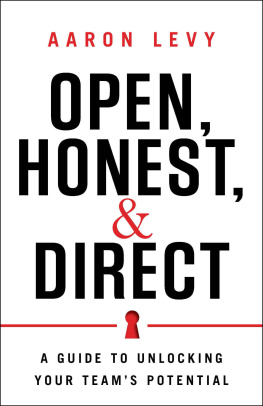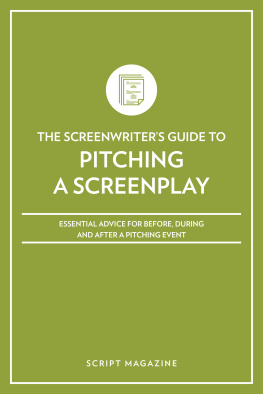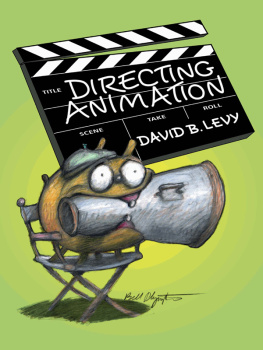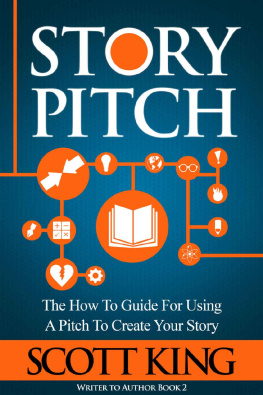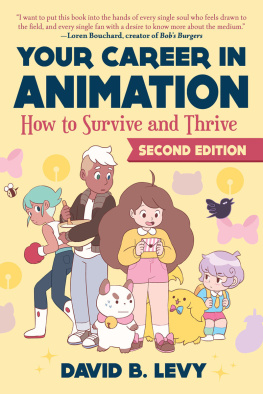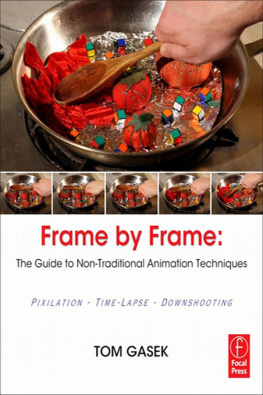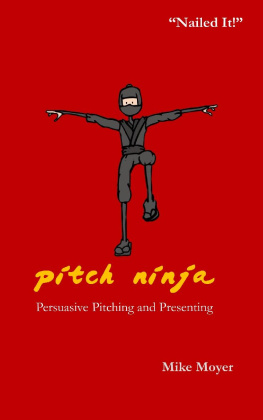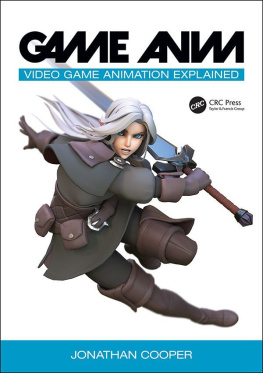
Animation
Development
FROM PITCH TO PRODUCTION
by David B. Levy

2009 David B. Levy
All rights reserved. Copyright under Berne Copyright Convention, Universal Copyright Convention, and Pan-American Copyright Convention. No part of this book may be reproduced, stored in a retrieval system, or transmitted in any form, or by any means, electronic, mechanical, photocopying, recording, or otherwise, without prior permission of the publisher.
12 11 10 09 08 5 4 3 2 1
Published by Allworth Press
An imprint of Allworth Communications, Inc.
10 East 23rd Street, New York, NY 10010
Cover design by Tamara Gildengers Connolly
Interior design by Tamara Gildengers Connolly
Page composition/typography by Sharp Des!gns, Lansing, Michigan
Cover images: Codename: Kids Next Door and all related characters and elements are trademarks of and Cartoon Network, A Time Warner company. Super Why! image is 2008 Out of the Blue Enterprises, LLC. All rights reserved. Super Why is a registered trademark and all related titles, logos, and characters are trademarks of Out of the Blue Enterprises, LLC. SpongeBob SquarePants art is 2008 Viacom International, Inc. All rights reserved. Nickelodeon, SpongeBob SquarePants, and all related titles, logos, and characters are trademarks of Viacom International, Inc. Created by Stephen Hillenburg.
ISBN -13: 978-1-58115-661-4
ISBN -10: 1-58115-661-8
eBook ISBN -978-1-58115-730-7
LIBRARY OF CONGRESS CATALOGING-IN-PUBLICATION DATA
Levy, David B.
Animation development : from pitch to production / by David B. Levy.
p. cm.
Includes index.
ISBN 978-1-58115-661-4
1. Animation (Cinematography)Vocational guidance. 2. Animated films
Vocational guidance. 3. TelevisionVocational guidance. I. Title.
NC1765.L476 2009
791.4334023dc22
2009011226
Printed in the United States of America
Dedication
A hundred years ago, animation was a novelty running side by side with the emergence of motion pictures. It was not until the development of the animated series, which featured a recurring star character, that animations place in the entertainment industry achieved any kind of permanence. The series format allowed its creators the luxury of developing a character over an extended period of time. Felix the Cat may have debuted in the 1919 cartoon Feline Follies, but it was not until a couple of years later that the character would resemble the cat we still know and love today. Over the course of many shorts helmed by creator Otto Messmer, Felix gained his appealing, streamlined, circular design and developed his pantomime-perfect personality. One can see the same process of evolution occur over and over again in animation history, from Bugs Bunny to Homer Simpson. I dedicate this book to all of the brilliant creators, writers, storyboard artists, layout artists, designers, background artists, animators, directors, editors, composers, voice artists, and sound designers of the past, present, and future, whoover each episodic outinghelp to sharpen a series to animated perfection. Each episode is not only one more chance to get it right; its another chance to make history.
Table of Contents
Chapter One
Beginnings
Chapter Two
Preparing a Pitch Part I: The Two-Sheet
Chapter Three
Preparing a Pitch Part II: The Pitch Bible
Chapter Four
Legal
Chapter Five
The Pitch Meeting Part I: The Creators Corner
Chapter Six
The Pitch Meeting Part II: The Money Side of the Table
Chapter Seven
Emotional Rescue
Chapter Eight
The Option or Paper Development Deal
Chapter Nine
The Pilot
Chapter Ten
Launching the First Season
Chapter Eleven
Happy Trails: Parting Thoughts and Advice
Appendix
Animation Pitching and Development Resource List
Acknowledgments
Oh, the irony. For more than ten years, I navigated the wilds of animation pitching and development, only to find my first success scoring a greenlight, not for a TV pilot or series, but for a book project (Your Career in Animation: How to Survive and Thrive). Go figure. Ive come to see this as an allegory for the subject of animation pitching and development. Success often arrives in unexpected ways and on a time line all its own.
But theres nothing random about the help, support, encouragement, and inspiration Ive received during my attempt to cut a Lewis and Clarkstyle trail through this industry. Special thanks go to Linda Simensky, Fred Seibert, and Brown Johnson for providing my earliest opportunities to pitch. My deepest gratitude is extended towards Paula Rosenthal for awarding me my first TV development deal (which conveniently arrived early in the writing process of this book), and for parlaying me into the next level of my career as a script/development writer on a subsequent TV property.
This book would be noticeably thinner and less nutritious without the generous support and contributions of some of todays top creators. Im forever indebted to Carl W. Adams, Craig Bartlett, Jerry Beck, Loren Bouchard, John R. Dilworth, David Fine, Manny Galan, Alan Goodman, Carl H. Greenblatt, Butch Hartman, Stephen Hillenburg, Jim Jinkins, Traci Paige Johnson, Fran Krause, Diane Kredensor, Candy Kugel, Craig McCracken, Adam Peltzman, Janet Perlman, Jackson Publick, Debra Solomon, Amy Steinberg, Doug TenNapel, Tom Warburton, and Mo Willems.
No less important to this book project, let alone to the process of animation pitching and development, were these kind folks from the ranks of network and Web development. Three cheers to Alice Cahn, Eric Coleman, Peter Gal, Athena Georgaklis, Eric Homan, Brown Johnson, Heather Kenyon, Madeleine Lvesque, Alex Manugian, Megan ONeill, Fred Seibert, Linda Simensky, and Tara Sorensen. A round of applause to entertainment lawyers Robert D. Marcus and Jim Arnoff for explaining complicated legal issues in terms so simple, even a four-year-old could understand. (The reader is encouraged to consult a four-year-old for the translation.)
Finally, special thanks to my wife, Deborah M. Staab, who, with her question, Whats your next book?, presumed that I had another in me, thus leading me on the road to writing this book that might help you have a better shot at successfully developing, pitching, and producing your creations. Debbies next question, Do you want mustard on that? has proved less influential on my destiny, but infinitely more delicious.
Introduction
This is not for the faint of heart.
Madeleine Lvesque, executive vice president of content development, 9 Story Entertainment
Im sitting here typing away in my underwear contemplating the readership of this book. Why underwear? Well, Id like this to be an intimate read, and it just so happens to be a humid New York summer day. As for subjects, I dont think I could have chosen a more difficult one. I was recently chatting with my friend, veteran development executive Linda Simensky, telling her a curious story in which, for a moment, it looked like my hard-won (now, theres an understatement) development deal had been squashed. Her reaction both horrified and comforted me: I dont know how anything gets made, she said.
Next page
